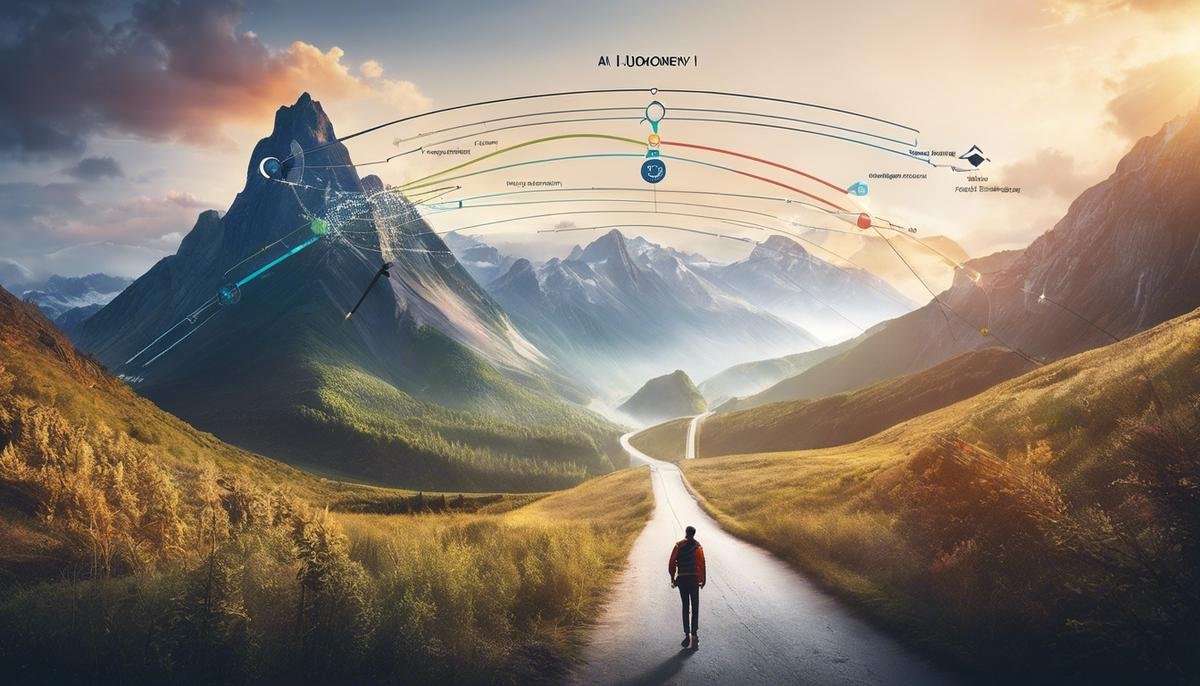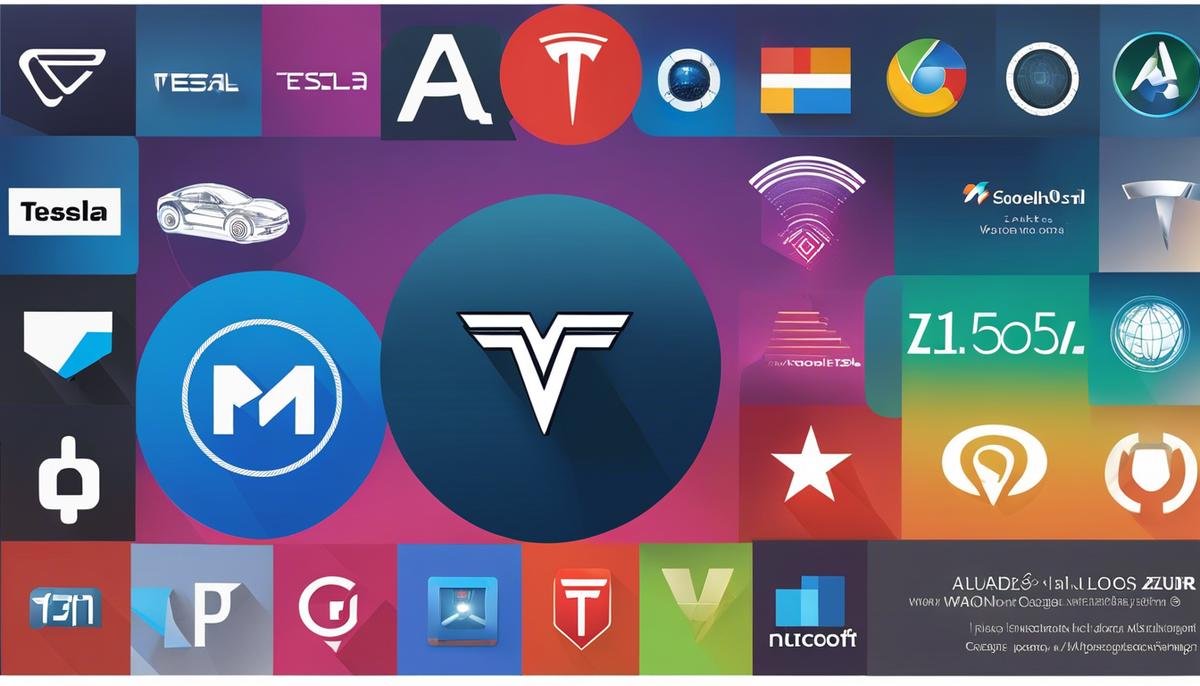As the digital era ushers in revolutionary advancements in technology, the relevance of Artificial Intelligence (AI) becomes more concrete and its impact, more profound. At the heart of this tech evolution lies an often overlooked player – the Midjourney AI. This piece sheds light on this specific AI model, tracing its footprint in the AI landscape and analyzing its competencies against other AIs. We embark on a comparative study, underlining the key attributes of Midjourney AI and juxtaposing it side by side with its contemporaries. But far from stopping at that, we’ll venture further into the frontier, exploring AI models that have arguably gone a step beyond, pushing the envelope in AI technology.
Understanding Midjourney AI
Imagine a machine deciding whether a mail is spam or not, or a music app predicting a playlist based on one’s listening preferences. These are all examples of what artificial intelligence (AI) can do. But, does AI start and end exclusively at predictive behavior? Not quite! A newer branch of AI, the Midjourney AI, is quickly making its mark.
What is so special about Midjourney AI? Let’s break it down.
Midjourney AI is a term coined by the software organization ZyloTech. It refers to the process of using AI application in a multi-stage customer journey, which means engaging customers at multiple touchpoints by using machine intelligence. Unlike its traditional counterparts, a Midjourney AI completes a customer’s experience by assisting them throughout their journey.
Why is this significant? This isn’t just another tech fad. The crucial role that Midjourney AI plays in enhancing customer experience is undeniable. Think about it, businesses aren’t just selling a product or service anymore. It’s all about selling experiences now. An easy, stress-free, and personalized customer journey can drastically increase customer satisfaction, which in turn, boosts profits.
In the 21st century, data is the new gold. Midjourney AI harnesses this gold, works on it using machine learning and predictive analytics, and frames a path towards improved customer relationships, and ultimately, higher revenues. It helps in providing a seamless, personalized, and engaging customer experience, which gives businesses the edge they need in today’s competitive market.
While the traditional AI systems rely on limited data to form a perspective about a customer, Midjourney AI paints a comprehensive holistic picture. By recognizing the many stopping places a customer may have on their purchasing journey (be it browsing, considering a purchase, or actually purchasing), Midjourney AI empowers businesses to offer well-timed and apt propositions to the customer.
Removing the burden of manual data integration, Midjourney AI automatically identifies patterns and offers solutions, thus saving resources and improving efficiency. It is an enabler of action-driven marketing and not merely data-driven marketing, as it goes beyond data collection and actually prompts actions.
In short, the significance of Midjourney AI lies in its ability to not just collect and analyze, but proactively offer solutions. That’s the marvel this new stride in technology is all about.

Comparing AI Models
When it comes to artificial intelligence, or AI, one model has been making some intriguing waves in the tech world. Named Midjourney AI, its distinctiveness lies in its approach to customer journeys, machine learning, and data integration. If you’re an early adopter in tech, you’re likely keen to know how it fares against other AI models. Let’s get straight into it.
Let’s first establish that our comparison bar is high. We have formidable opponents in the AI world. Consider IBM’s Watson, Google’s DeepMind, Microsoft’s Azure AI, and Tesla’s Autopilot, to name a few. The success of these models lies in their meticulous algorithms, their high-level data analysis, and their multi-faceted adaptability. You’d be right to think that Midjourney AI has its work cut out for it.
Even so, the value proposition of Midjourney AI lies in an area that was largely overlooked before: the middle of the customer journey. Typically, AIs have excelled at analyzing initial customer interactions and the closing phase of customer journeys. The middle part – the transition period where real-time data is the most abundant yet the most challenging to analyze – is where the Midjourney AI thrives.
Other AI models often have trouble automating data integration – a critical process in creating personalized customer journeys. They analyze isolated incidences rather than inter-connected events. On the contrary, the Midjourney AI harmonizes all data, spotting patterns across multi-dimensional metrics and using the findings to tailor-make the user experience. It can also self-adjust and learn from these patterns, marking a key differentiator from other AI models.
The Midjourney AI also sets itself apart in terms of action-driven marketing. Traditional AI learns from past behavior and predicts future actions. However, predicting the journey’s path and having an impact on its direction are two different things. Midjourney AI goes beyond the former, by directly influencing customer decisions and fostering customer engagement. This provides opportunities not only for enhanced customer experience but also for increased revenue.
It’s vital to note that no AI model is universally superior. Each shines in its own niche. Midjourney AI stands out in the arena of customer experience enhancement, where it leverages data and predictive analytics to provide impactful results. The ingenuity of this model lies in its proactive problem-solving, making it a promising entrant in AI’s competitive landscape. So, while comparisons are feasible, an AI model’s efficacy can only be evaluated based on its fit within its intended purpose. For companies focused on customer journey enhancement, there’s little doubt that Midjourney AI holds the competitive edge.

Superior AI Models
In the rapidly evolving landscape of artificial intelligence (AI), there are always new developments and enhancements to existing models to consider. Today, we are exploring AI models that go beyond the capabilities of Midjourney AI in certain respects, despite its spectacular advancements. These potent models are IBM’s Watson, Google’s DeepMind, Microsoft’s Azure AI, and Tesla’s Autopilot.
IBM’s Watson is one AI model that often excels over Midjourney AI due to its wide array of capabilities. It offers a higher degree of artificial cognition, which allows it to handle more complex tasks like disease prediction, and content creation. Watson’s advanced language comprehension skills enable it to excel in fields requiring high-level understanding and interpretation of human language, such as customer relations and news generation. In comparison, Midjourney AI, whilst excellent at enhancing customer experience, does not have the same level of language processing capabilities.
Google’s DeepMind, on the other hand, boasts state-of-the-art capabilities in the realm of machine learning. It is designed to mimic the neural activities of the human brain, often performing better than Midjourney AI in tasks requiring complex decision making and problem solving. DeepMind’s superior capabilities are particularly pronounced in the realm of gaming, where it has outperformed humans at chess, Go, and other strategic games. Unlike Midjourney AI, DeepMind’s algorithmic structure allows for the application of reinforcement learning at an unmatched level.
Microsoft’s Azure AI distinguishes itself with its cloud-based functionalities. Azure AI offers tremendous scalability and flexibility for businesses, outdoing Midjourney AI in this regard. Whether it’s computer vision, natural language processing, or predictive analytics, Azure AI process large amounts of data at high speeds without any significant hitches. Midjourney AI, while excellent in processing customer journey data, doesn’t offer the same level of broad applicability and scalability.
Tesla’s Autopilot is another AI model with capacities beyond what Midjourney AI offers. The Autopilot system, used in Tesla’s electric vehicles, excels in the automation of complex processes such as driving. It leverages AI to interpret extensive sensor data in real time, enabling autonomous driving capabilities far beyond what Midjourney AI is designed for.
While each of these AI models consistently outperforms Midjourney AI in their respective fields, it is important to underline that the choice of an AI model hinges on the specific application or objective. Each AI model, including Midjourney AI, brings profound value within its own specialty. It is the careful analysis and understanding of one’s needs that guide the choice of an AI model. Therefore, it is essential to hinge selections on the unique needs of the business or application in question rather than trying to find a one-size-fits-all solution.

Applications and Implications of Superior AI Models
Stepping Into the Future of AI
In an age gushing with technological innovation, AI (Artificial Intelligence) has skyrocketed as a frontrunner in digital transformation. The digital world keeps evolving, and, as we know, survival is for the fittest. The ‘fittest’ in this context, refers to AI models that continuously adapt, learn, and improve, all while focusing on delivering a bespoke, valuable user experience – the Midjourney AI.
AI and Superior Solutions
AI is powering up industries and enterprises at an unprecedented pace, not to mention its remarkable contributions to creative sectors like graphic design and AI-generated artificial reality. Artistic AI, with the power to simulate human intuition, has brought about a revolution in painting, writing, cooking and many other arts.
Then come the AI offshoots, like IBM’s Project Debater. An exceptional marvel, Debater analyzes arguments, formulates counterpoints, and holds its ground in debating human opponents.
DeepMind, another AI marvel, has boosted Google’s online services. It’s the powerhouse behind Google Assistant’s ability to comprehend and respond to voice commands. DeepMind’s AI has also broken records in gaming, mastering complex games like Go and Chess, presenting a unique amalgamation of machine learning and AI.
Microsoft is endeavoring to make AI accessible to all with its global cloud platform, Azure. Azure AI provides versatile solutions like fraud detection for banks and personalizing retail experiences, exhibiting the technology’s potential for versatility.
AI has even braved the automotive sector, with Tesla’s Autopilot promising a future of self-driving cars. Using real-time sensor data, machine learning, and cloud computing, AI is paving the way for cutting-edge autonomous vehicle technology.
AI Models, the Keys to a Digital Economy
The potential of AI goes far beyond personal assistants or self-driving cars. AI models are the means to unlock hitherto unimaginable paradigms in cybersecurity, healthcare, education, military, entertainment, and e-commerce.
Cybersecurity firms leverage AI models to detect and prevent threats. AI-powered systems excel at spotting unusual activity, offering layers of protection against malicious attacks.
Healthcare sees AI models providing diagnostic tools, predicting illnesses, creating personalized treatment plans, powering robotic surgery, and managing patient data. Imagine a world where illness is predicted and tackled even before symptoms appear!
In education, AI models foster personalized learning, automate grading, and provide interactive, immersive experiences. Military applications range from surveillance, target recognition to managing logistics, while the entertainment industry thrives on AI’s power to create realistic graphics, voiceovers, and customized consumer recommendations.
The road ahead for AI
The meteoric rise of superior AI models promises a technological utopia. But this future is not without challenges. Responsible AI use, protecting privacy and data, decision transparency, and avoiding AI monopolies are issues to grapple with as we strut toward AI-driven futures.
The march towards the AI future is relentless and inevitable. Choosing the right AI model remains crucial; it adds the ‘intelligence’ to our solutions, making way for a world where AI becomes synonymous with the transformation of mere concepts into tangible realities. Let’s step into this future, fueled by the power of AI. Let’s embrace the change. And as we do, let’s ensure we proceed with wisdom, responsibility and a commitment to using AI for the common good.

Through this exploration, we have seen that the advancement in AI technology is relentless and rapid. Some models are evolving at a remarkable pace, setting new standards of performance in both function and reliability. Superior AI models present us with a glimpse of how the future of tech may be shaped. Their applications are far-reaching and their implications for the future, astounding, echoing a significant shift not just in technology, but also in societal structures and individual lives. While the current landscape showcases an intense competition amongst AI models, with some outshining Midjourney AI, it’s evident, each contributes uniquely to our ever-evolving digital world and their collective impact continuously redefine the realm of possibility.




